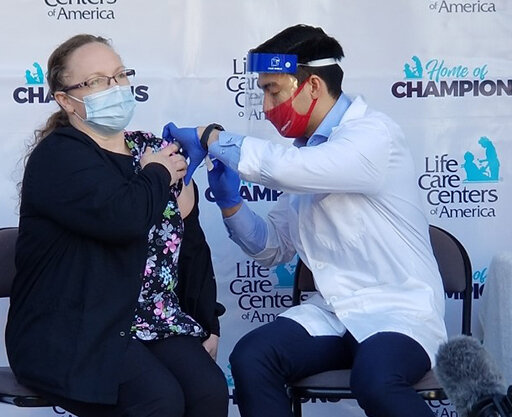
Today marks the one-year anniversary of the first COVID-19 outbreak in the United States. It was announced Feb. 29, 2020, at a Kirkland, WA, nursing home and kicked off what has roundly been called the worst year in the history of the industry.
The ensuing healthcare chaos and carnage has been unlike anything experienced by anyone currently living. The numbers, as of Sunday, are staggering: 2.5 million dead and 114 million infected worldwide — including 512,000 dead and 25.6 million infected in the U.S., according to the Johns Hopkins University coronavirus tracking site.
Well over 100,000 nursing home residents and employees have died due to COVID-19.
It has been the deadliest U.S. health crisis in more than 100 years, drawing comparisons to the Spanish flu of 1918-1920. That pandemic ultimately infected 500 million people worldwide, about one-third of the globe’s inhabitants, and killed “at least 50 million,” including about 675,000 in the U.S., according to the Centers for Disease Control and Prevention.
By most accounts, the U.S. has undergone three waves of COVID-19, each flaring especially high in particular geographic regions. Nursing home personnel, both residents and workers, consistently have accounted for nearly 40% of the deaths, despite accounting for less than 1% of the U.S. population.
With the news of a dangerous respiratory virus circulated in China for several months, and then in parts of Europe, most U.S. providers expected it to eventually land in America. But few, other than perhaps a handful of epidemiologists, had any idea of just what the country could be in for.
As reported by McKnight’s one year ago, one resident was reported dead and four others were hospitalized in the initial Washington state outbreak. The virus might have spread for six weeks before officials recognized or acted up on it as the novel coronavirus. In addition to the dead and hospitalized, more than 50 other residents and staff reported symptoms at Life Care Centers of Kirkland.
Subsequent research supports the theory that the virus had circulated in other domestic places earlier, but there were no official reports or declarations of an outbreak until Feb. 29, which would have been March 1, in a non-leap year.
At this time, most providers and the rest of the country still were not yet compelled to restrict access, scramble for personal protective equipment or take the widespread isolation measures that today are routine.
That changed quickly, however, with the World Health Organization declaring a global pandemic just 12 days after the first U.S. outbreak. The next day, President Trump declared a national state of emergency, when the death and infection counts were in the “hundreds and tens of thousands, respectively,” according to McKnight’s accounts.
All visitors, except “essential” workers, were banned at U.S. nursing homes starting March 13.
“The grim reality is that, for the elderly, COVID-19 is almost a perfect killing machine,” American Health Care Association President and CEO Mark Parkinson said in a CNN interview on March 11.
State “shelter in place” decrees began and led to an estimated 100 million Americans staying at home.
As of mid-March, the number of positive COVID-19 cases in the U.S. “was rising so fast that the World Health Organization said the U.S. had the potential of becoming the virus epicenter,” McKnight’s reported. The bleak forecast quickly became true as federal officials struggled to create a cohesive strategy to serve the nation, a battle that would prove elusive over the better part of a year.
Often criticized for slow recognition of the scope of problems or providers’ dire needs, the Centers for Medicare & Medicaid Services wound up issuing dozens of waivers and amending a variety of enforcement actions. It also became mired in controversy after regulators fined Life Care Kirkland more than $600,000 but then saw a court strike down the penalties.
Today, a vast majority of nursing home residents have been vaccinated against COVID-19 but they remain under mask mandates and without most group activities. Operators, meanwhile, are pursuing a variety of strategies to raise the national average staff-vaccination rate to a respectable level.
Modified group activities may return on a larger scale by the end of the month, as providers and the nation continue to feel their way through the unprecedented crisis. But while some national health officials have said the worst may be over, they also are warning that there is still plenty of danger. Some have suggested that masking and other social distancing measures might remain necessary into 2022.



